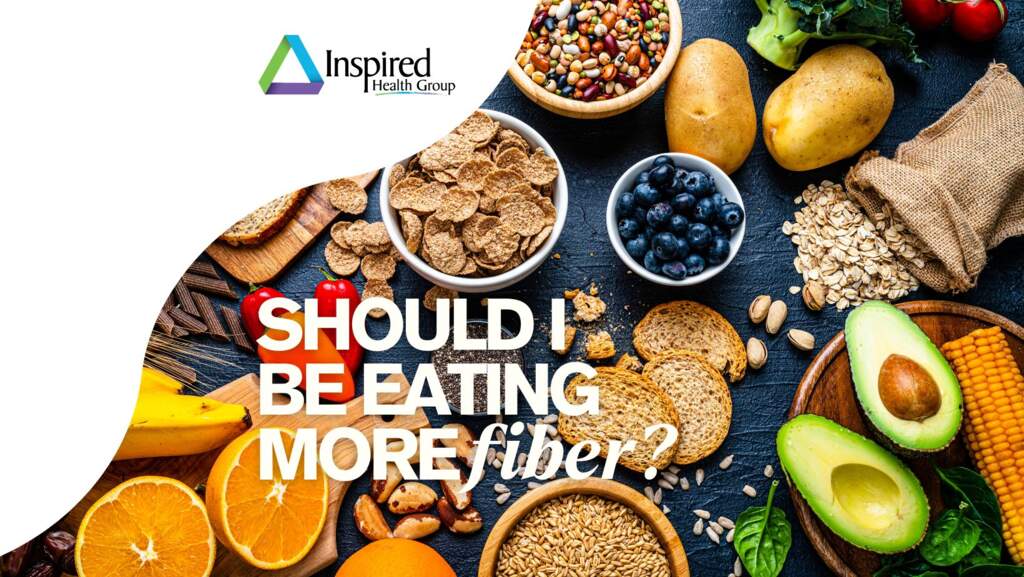Feb 3, 2025
Fiber & Heart Health
Most Americans get less than half the suggested amounts of daily fiber. The popularity of very-low-carbohydrate diets, like the ketogenic or "keto" diet, the Atkins diet, and the Whole 30 diet, which may unintentionally decrease fiber consumption, haven't helped matters. When we think of our overall diet and heart health, it may be time to give fiber another look!
How much fiber do you need?
Children and adults need at least 25 to 35 grams of fiber per day to maintain good health. However, most Americans get only about 15 grams a day. Talk to your health care provider about daily fiber intake specific to your needs.
Heart Healthy Benefits of Fiber
High Fiber Diet and Lifespan:
An analysis of almost 250 studies confirmed on a large scale that eating lots of fiber from vegetables, fruits, and whole grains can decrease your risk of dying from heart disease and cancer. People who ate the most fiber reduced their risk of dying from cardiac disease, stroke, type 2 diabetes, and/or colon cancer by 16% to 24%, compared to people who ate very little fiber. Additionally, for every additional 8 grams of dietary fiber a person consumed, the risk for each of the diseases fell by another 5% to 27%. Risk reductions were greatest when daily intake of dietary fiber was between 25 and 29 grams. The conclusion; that more fiber is better!
High fiber and lower cholesterol levels:
The soluble fiber found in beans, oats, flaxseed and oat bran may keep the body from absorbing some of the cholesterol in other foods. This can lower "bad" (lipoprotein) cholesterol levels in the blood. High-fiber foods may have other effects on heart health, such as lowering blood pressure and lessening swelling in the body called inflammation.
Blood sugar levels and fiber
In people with diabetes, fiber may slow the absorption of sugar and help improve blood sugar levels. This is especially true of soluble fiber. A healthy diet that includes both soluble and insoluble fiber also may lower the risk of type 2 diabetes.
Tips from a Dietitian Nutritionist:
So what are some sources of fiber? Sure, you can mix some powder with water and get some “fiber” that way, but why not find a way to enjoy the benefits. What I mean by that is to eat the fiber. How you ask? Think back to the basics, vegetables, fruits, and whole grains. Yup, it’s that simple.
Sources of Fiber:
- Whole-grains such as barley, bulgur, brown rice, and whole-wheat bread or pasta, such as:
- whole wheat spaghetti, pearled barley, bran flakes, quinoa, oatmeal
- Vegetables, such as:
- green peas, broccoli, Brussels sprouts, turnip greens, baked potato with skin
- Fruits, such as:
- raspberries, pear, apple with skin, banana, orange
- Beans, peas and other legumes, such as:
- split peas, lentils, black beans, cannellini beans, kidney beans
- Nuts and seeds, such as:
- chia seeds, almonds, pistachios, sunflower kernels, peanuts
How to get more fiber in your diet:
My suggestion is to think about all your meals and snacks and try to plug in a vegetable. If that doesn’t work then think about a whole grain or a fruit. I’m starting with vegetables because we can always use more vegetables in our diets. They offer such a nutritional bang for your buck that it makes the most sense to suggest a vegetable first. (We’ll talk about starchy and non-starchy carbs in another blog). For now, just focus on increasing your fiber. Add some spinach to your scrambled eggs at breakfast, hummus and cucumber for an afternoon snack and an extra scoop of green beans at dinner. Keep it simple and don’t be afraid to experiment with new recipes. I personally like Cooking Light and Minimalist Baker.
- Nicole Moretta, MS, RD, CDN
Related Inspired Health Group Blogs:
Recipes for Meatless Monday Meals and Beyond!
American Heart Month: Eat More Plants, Move More!
4 Ways to Start Focusing on Heart Health
